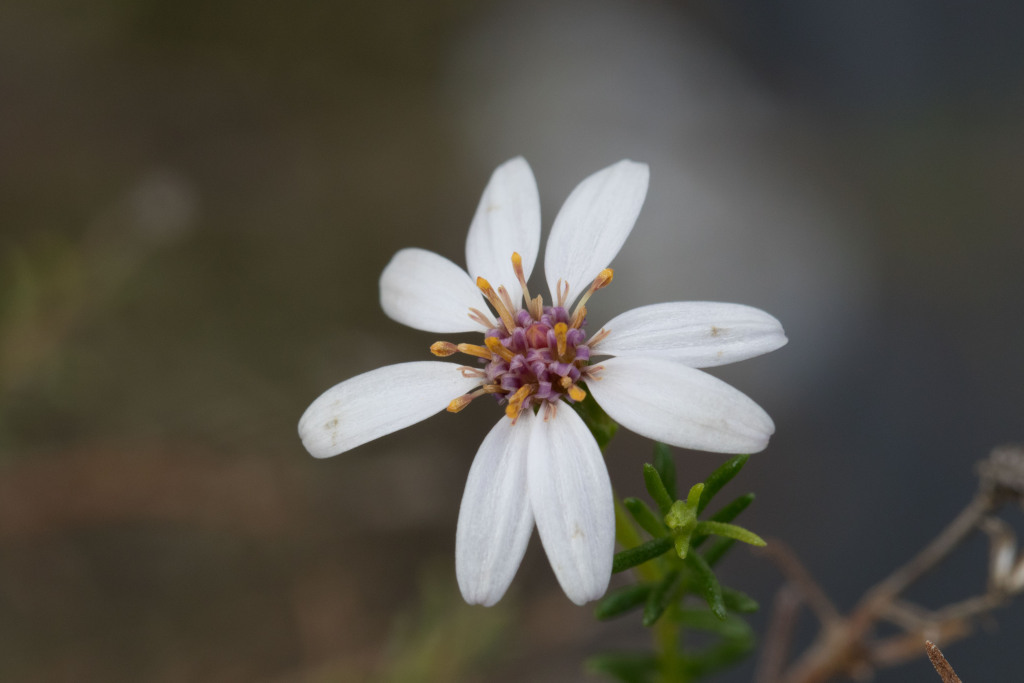Olearia passerinoides
(Turcz.) Benth.Slender glabrous shrub to c. 2 m high; branchlets and leaves viscid. Leaves alternate, sessile or subsessile, usually subappressed to stem, linear, 4–25 mm long, 0.5–1 mm wide, obtuse, usually slightly excurved at apex, compressed-terete, slightly concave above, convex below, at least in the lower half (sometimes grooved either side of midrib toward apex). Capitula 11–23 mm diam., terminal, solitary, sometimes profuse and appearing corymbose; peduncles to 1 cm long; involucre campanulate, 5–6 mm long; bracts 3–4-seriate, graduating, glabrous, pale but green-tipped, slightly resinous. Ray florets 5–9(–15), white (rarely mauve), ligules 4–7 mm long; disc florets 4–14, mauve or pink. Cypsela cylindric, 1.5–2 mm long, 6–8-ribbed, sericeous; pappus bristles white to straw-coloured, 4–5 mm long.
LoM, MuM, Wim, Brid, RobP, Gold, DunT.
2 subspecies, both in Victoria.
Walsh, N.G.; Lander, N.S. (1999). Olearia. In: Walsh, N.G.; Entwisle, T.J., Flora of Victoria Vol. 4, Cornaceae to Asteraceae, pp. 886–912. Inkata Press, Melbourne.
 Spinning
Spinning


